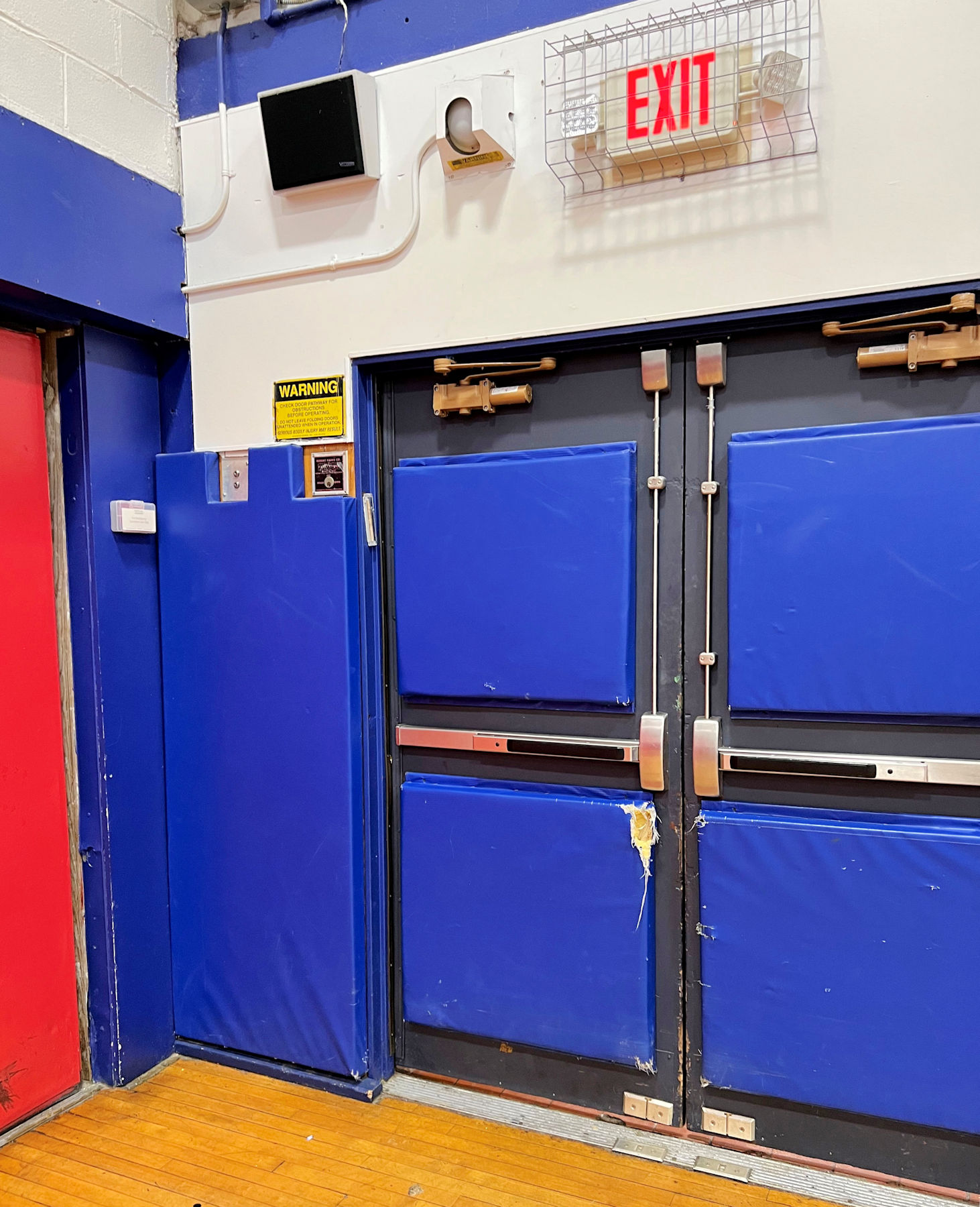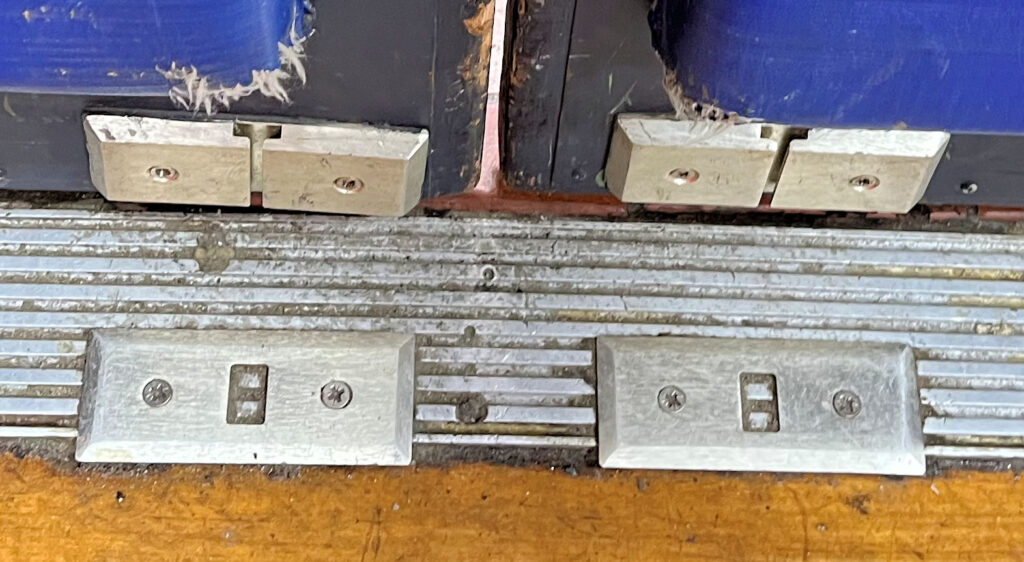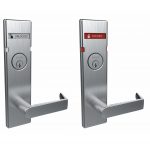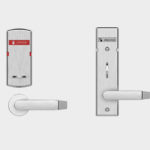 I have shared my concerns about classroom barricade devices dozens of times, but today’s Wordless Wednesday photos from Mark Berger of Securitech have inspired me to review the issues once again. The photos were taken in a school gym, where a marked exit has been retrofitted with barricade devices, intended for use in an active shooter situation. If you have not seen this barricade product before, there are L-shaped metal pieces in the plastic box on the wall, which slide into the slots on the doors and engage with the plates mounted on the threshold.
I have shared my concerns about classroom barricade devices dozens of times, but today’s Wordless Wednesday photos from Mark Berger of Securitech have inspired me to review the issues once again. The photos were taken in a school gym, where a marked exit has been retrofitted with barricade devices, intended for use in an active shooter situation. If you have not seen this barricade product before, there are L-shaped metal pieces in the plastic box on the wall, which slide into the slots on the doors and engage with the plates mounted on the threshold.
To ensure life safety, fire protection, and accessibility, the I-Codes require the following (the NFPA code requirements are similar):
- The door must meet the egress requirements of the code section entitled “Door Operations.”
- Releasing hardware must unlatch the door for egress with one motion.
- The hardware must allow free egress without the use of a key, special knowledge or effort.
- Operable hardware must be mounted between 34 inches and 48 inches above the floor (some state codes and standards have more restrictive mounting height limits).
- Door hardware must be operable without tight grasping, pinching, or twisting of the wrist.
- If the calculated occupant load of the room is 50 people or more, the door must be equipped with panic hardware.
- The door must be able to be unlocked from outside of the room with a key or other approved means.
- No modifications shall be made to listed panic hardware, fire door hardware, or door closers.
- Alterations made to fire door assemblies must comply with NFPA 80 – Standard for Fire Doors and Other Opening Protectives.
When the barricade devices are in place, these doors do not unlatch with one releasing motion, special knowledge or effort is required in order to remove the device for egress, the device is located below the allowable range, and it requires tight grasping and pinching. The gym requires panic hardware because of the occupancy type and calculated occupant load, and an additional lock/security device is not allowed by code. An unauthorized person could install the barricade devices to prevent access to and egress from the gym, and I think it would be difficult or impossible for school staff or emergency responders to enter; beginning with the 2018 model codes, the ability to unlock the doors from the outside is mandated by code.
The other problem I can see here is not code-related. The manufacturer’s installation instructions show that a 3/8-inch deep hole must be drilled below the floor plate, to allow the L-shaped piece to extend through the plate and into the threshold or floor below. These holes were not drilled, so there is VERY little engagement at the plate. I can’t imagine how the barricade devices will provide any security at all, given the way the floor plates were installed.
At this school, staff and students are counting on these devices to provide security. The panic hardware is only securing the doors at the top, which is not ideal, and as previously mentioned, the barricade devices will not provide the needed security as installed. This situation is dangerous not only from a code perspective, but from a security perspective as well.
I would recommend using the existing hardware to lock the doors (adjust/repair if necessary), and this will provide the necessary level of security while allowing code-compliant egress and accessibility.
If you disagree, tell me why in the comments. I’m always willing to listen to another perspective.
You need to login or register to bookmark/favorite this content.











Leave A Comment